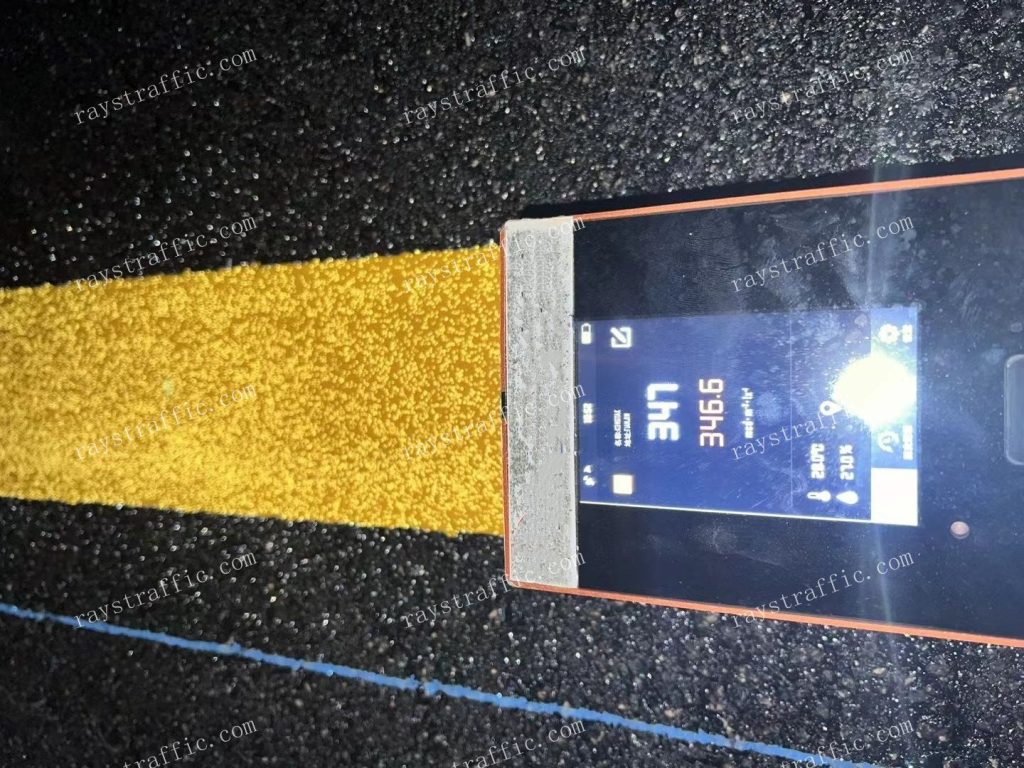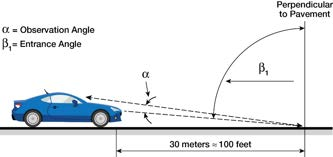Retroreflection measurements can provide road authorities with valuable information about the condition of road markings, as well as the effectiveness of the workers who apply them.
By measuring the retroreflection of road markings, by focusing on markings that fall below minimum retroreflection levels. Authorities can determine when and where restoration is necessary. This approach can help reduce road maintenance costs by ensuring that markings are only restored when needed.
Follow are the important pavement marking retroreflectivity definitions will help you understand retroreflection measurement more.
1. Horizontal signalization
Pavement markings together with road studs form the means for horizontal signalization. Pavement markings include longitudinal markings, arrows, transverse markings, text and symbols on the surface of the highway, etc. Most pavement markings are white or yellow, but in special cases other colours are used. Pavement markings can be provided by the application of paint, thermoplastic materials or reactive materials, pre-formed lines and symbols or by other means.

2. Pavement marking functional life
Period during which the pavement marking fulfils all the performance requirements of the classes initially specified by the road authority. Pavement markings are either permanent or temporary.
3. Standard measure condition
The measurement geometry of the road marking retroreflectometer should be based on a viewing distance of 30 meters, a headlight mounting height of 0.65 meters directly above the line stripe, and an eye height of 1.2 meters directly over the line stripe.

EN 1436 defines the observation angle a shall be 2.29°, and the entrance angle of 1.05 degrees.
Referance: EVALUATION OF ROAD MARKINGS RETOREFLECTION MEASURING METHODS-European Scientific Journal February 2014 /SPECIAL/ edition vol.3 ISSN: 1857 – 7881 (Print) e – ISSN 1857- 7431
In ASTM 1710, retroreflectivity levels for pavement markings are measured with an entrance angle of 88.76 degrees and the observation angle of 1.05 degrees. This geometry is also referred to as 30-meter geometry.

Referance:Methods for Maintaining Pavement Marking Retroreflectivity-FHWA-SA-22-028 | July 2022-U.S. Department of Transportation Federal Highway Administration
4. Qd
Qd is pavement markings reflection in daylight or under road lighting. It is luminance coefficient of pavement markings under diffuse illumination. Qd is the property of the road marking which describes the brightness of its colour.
5. Rl
Rl is commonly named pavement markings retroreflection under vehicle headlamp illumination. Rl means pavement markings coefficient of retroreflected luminance. It is the ability of a road marking to reflect light from vehicle headlights back to the driving position of a vehicle. RL dry measures the retroreflectivity of pavement markings in a conditions of dry nighttime. RL wet measures the pavement markings wet retroreflectivity in a condition of wet recovery.
6.Pavement marking retroreflectivity unit
The units of pavement marking retroreflectivity are reported in mcd/m2/lx, which means millicandelas per square meter per lux.
